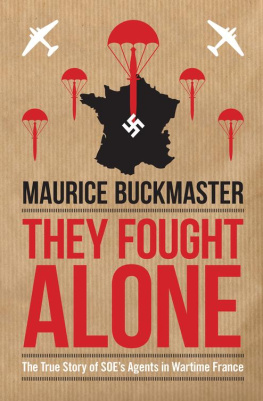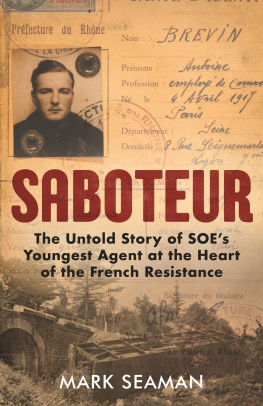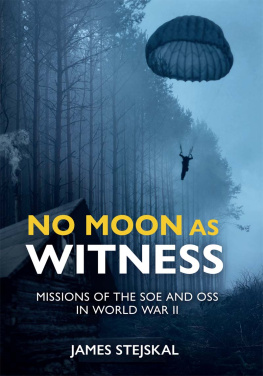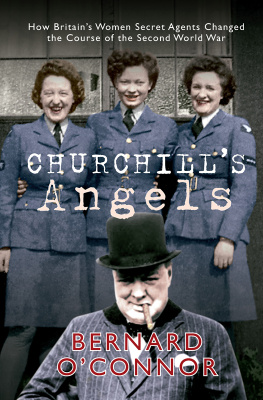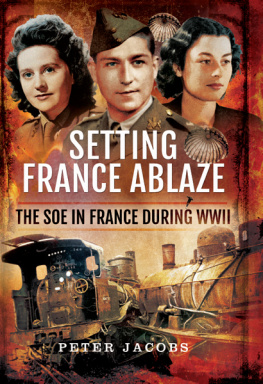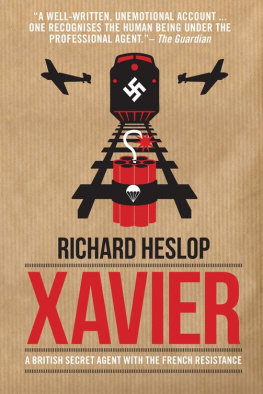T he role played during the Second World War by the French Resistance and by the British Special Operations Executive (SOE) officers and agents who worked alongside them is widely understood. But their critical role ahead of D-Day is only rarely recognised and is certainly far less known. There were a number of Allied special operations forces on the ground in France, of which those run by F Section of SOE were by far the most numerous. Indeed, F Section was the largest individual section within SOE, running more than eighty circuits or groups of resistance fighters, each with an organiser sent in from the F Section headquarters in Baker Street, London, based just a few yards from the supposed home of fictional detective Sherlock Holmes.
The head of F Section was Maurice Buckmaster, who was thirty-seven at the start of the war and had been a teacher, a merchant banker, the head of the first French office of the Ford Motor Company and then head of its European operations. Buckmaster was commissioned into the Intelligence Corps and in 1941, being fluent in French, was appointed head of SOEs independent French section. There was a separate French section designated RF which worked with the Free French led by Charles de Gaulle. Relations between the two sections were often difficult.
In recent years, it has become fashionable to blame Maurice Buckmaster for the deaths of SOE agents who were killed as a direct result of German infiltration of F Sections circuits. There is no doubt that F Section suffered substantial losses and that a relatively small number of its circuits (eight out of a total of eighty-six) were penetrated and turned back against the British under German control. Buckmaster cannot entirely escape blame for that, although he was certainly not solely responsible. But the losses need to be kept in perspective. F Section had at least 425 agents in France, of whom 104 died, with only around twenty dying as a direct result of the German penetration of the eight circuits.
Those sent in from England were told before they went in that their life expectancy, in a country where Nazi surveillance was far more intense than it was in any other country in occupied Europe, was just six weeks. In such circumstances, it would have been odd indeed if the Germans had not managed to track down some of the SOE agents, even if they had not been assisted by Henri Dricourt, an SOE agent who passed details of some of his fellow agents to the Sicherheitsdienst.
The original revelations of the German successes, made in the late 1950s by the writers Elizabeth Nicholas and Jean Overton Fuller, led to the commissioning of an official history of SOE in France by Professor M. R. D. Foot and it is worth quoting his conclusions: Not only did F Section staff do all for the best; they did all that could be reasonably expected of them, given whom they were up against. There was far too much going on at once for every circuit to get the minute care it deserved.
It has been argued that Buckmaster failed to pick up telltale signs from the radio communications with his agents that they had been captured. The omission of important security checks which ought to have been seen as signs that the agents had been captured and were being played back against the British were missed. Certainly they were, but not by Buckmaster. Spotting those issues was not his job. The more pertinent criticism is that when told of such problems by Leo Marks, the head of SOE coding, he ignored them. While there is substance to such claims, it is clear from Markss admirably honest From Silk to Cyanide that the reality is more nuanced.
It is true that Buckmaster was sometimes reluctant to accept that an agent had been blown, but not always without justification. Even the best agents occasionally failed to send security checks or sent the wrong ones. But it is clear from the Marks account that Buckmasters failing was more a reluctance to give up on any one of his agents and in the case of at least two of the better known casualties, Gilbert Norman and Noor Inayat Khan, Buckmaster recognised they were blown but insisted on continuing to communicate with them in the hope that it would keep them alive. Marks noted that no matter how late he called the F Section head with a message from an agent in the field, he was always waiting in his office, and his first concern was for the safety of the agent. Not all country section directors shared that attitude. To some of them, agents in the field were heads to be counted, a tally they could show CD [SOE Chief Colin Gubbins]. But Maurice Buckmaster was a family man.
Notwithstanding the failures, there were fifty active circuits in place, all under Buckmasters control, when it really mattered ahead of D-Day. Co-ordinated from London via the messages personnels broadcast by the BBC, they mounted a campaign of sabotage of railways, bridges, and German supply and ammunition dumps. They also destroyed telephone exchanges, an important element which ensured that German communications had to be sent by wireless transmissions that could be intercepted by the British and deciphered at Bletchley Park.
The work of the Communist Maquis in mounting guerrilla attacks on German troops, delaying their arrival in Normandy and thereby enabling the allies to establish a vital bridgehead, has never been properly recognised, not even in France where they were airbrushed out of history because they were not part of the Free French forces. None of these vital operations would have been possible on such a scale without F Sections operations and support.
At the end of the war, when the failures were already well known to his superiors, Buckmaster was described as an excellent officer with great powers of inspiring other people. It was owing to his wide knowledge of the French and his personal drive and enthusiasm that a large part of the French Resistance was successful.
He was appointed an Officer of the Most Excellent Order of the British Empire, a Chevalier de la Lgion dHonneur by the French government and awarded the Legion of Merit by the US government. He wrote two memoirs, Specially Employed (1952) and this book, They Fought Alone (1958). It is a true classic but was written a dozen years after the war and before the official files were released, and as a result included a number of mistakes which have been edited out of this book. In addition, agents whose identities had been disguised have been named to ensure that their bravery is recognised. I am very grateful to David Harrison for his assistance in helping to ensure that it is now as accurate as possible.
Michael Smith
Editor of Dialogue Espionage Classics
The map on the opposite page contains references only to those who are mentioned in the text of the book. There were many other leaders and thousands of Frenchmen who do not find mention here.
| HQ Staff |
| Colonel Maurice Buckmaster | Section Head |
| Vera Atkins | Intelligence and PA to Section Head |
| Lt Col Robert Bourne-Paterson | Planning |
| Major Jacques de Gulis | Briefing |
| Major Lewis Gielgud | Recruiting |
| Major Grard Morel | Operations |
| Captain George Bgu | Signals |
| Major Louis Huot | US liaison officer |
| Mr Park | Janitor |
These are just some of the more than eighty F Section circuits across France with their organisers. There were around fifty circuits operating ahead of D-Day

